Textile Recycling Financial Model

5-Year Financial Projections
100% Editable
Investor-Approved Valuation Models
MAC/PC Compatible, Fully Unlocked
No Accounting Knowledge Needed
Textile Recycling Financial Model
Bundle Includes:
-
Financial Model
-
Business Plan
-
Pitch Deck
-
Financial Dashboard
ALL IN ONE MEGA PACK - CONSIST OF:
Textile Recycling Financial Model/Business Plan Excel Template
Pitch Deck Template For PowerPoint, Keynote & Google Slides
Business Plan Guide and Business Plan Template in MS Word Format
Financial Dashboard in Excel To Track Your Business Performance
TEXTILE RECYCLING FINANCIAL MODEL FOR STARTUP INFO
Highlights
This comprehensive five-year textile recycling investment model template offers detailed financial planning for textile sustainability, incorporating key metrics for evaluating the economic impact of textile recycling. Designed for startups and entrepreneurs, it includes integrated apparel recycling cost models, fabric waste financial projections, and recycled fabric market financial analysis to support fundraising and business planning. The template features financial forecasts, revenue streams, and cost-benefit analysis tailored to recycled textile business plan financials, making it an essential tool for assessing clothing recycling profitability and textile circularity financial metrics—all fully customizable and unlocked for easy editing.
The textile recycling financial model Excel template effectively addresses common pain points faced by startups and businesses in the sustainable textile sector by providing an integrated solution for apparel recycling cost modeling, fabric waste financial projections, and circular economy textile financials in one consolidated platform. It eliminates complexity in financial planning for textile sustainability by delivering actionable insights into clothing recycling profitability models and eco-friendly textile financial forecasts, enabling users to conduct thorough cost-benefit analyses and assess the economic impact of textile recycling. Moreover, this ready-made model supports strategic decision-making through financial modeling for waste textile revenue streams, textile waste management financial models, and recycled fabric market financial analysis, ensuring accurate and dynamic financial planning that aligns with environmental textile financial planning and textile reuse financial strategies.
Description
This sustainable textile financial modeling tool offers a comprehensive apparel recycling cost model integrated with a circular economy textile financials framework, enabling accurate fabric waste financial projections and apparel waste financial feasibility assessment. Designed as a recycled textile business plan financials template, it incorporates detailed financial planning for textile sustainability, including cost-benefit analysis of textile recycling and diverse textile recycling revenue streams to evaluate clothing recycling profitability. With 5-year eco-friendly textile financial forecasts and a textile reuse financial strategy, this textile recycling investment model supports startup summary, profit and loss statements, pro forma balance sheets, equity valuation, and break-even analysis, ensuring robust financial modeling for waste textile and clear environmental textile financial planning to guide informed decision-making without requiring technical expertise.
TEXTILE RECYCLING FINANCIAL MODEL FINANCIAL MODEL REPORTS
All in One Place
Our sustainable textile financial modeling template offers comprehensive financial planning for textile sustainability. Designed for both startups and established businesses, it includes detailed proformas for profit and loss statements, cash flow, and balance sheets. This apparel recycling cost model provides month-on-month and year-on-year financial projections, enabling precise economic impact analysis of textile recycling. With integrated textile recycling revenue streams and circular economy textile financials, it supports strategic decision-making for maximizing profitability and advancing eco-friendly textile initiatives through robust financial forecasting and cost-benefit analysis.

Dashboard
Our 3-year textile recycling financial projection dashboard streamlines sustainable textile financial modeling by automatically generating key metrics, including revenue streams, gross margin percentages, and profit charts. Designed for apparel recycling cost models and fabric waste financial projections, it presents clear insights through dynamic charts and graphs. This tool empowers analysts to effectively communicate the economic impact of textile recycling and circular economy textile financials to stakeholders, covering projected income statements, balance sheets, and cash flow forecasts—all in an intuitive Excel format tailored for eco-friendly textile financial planning.
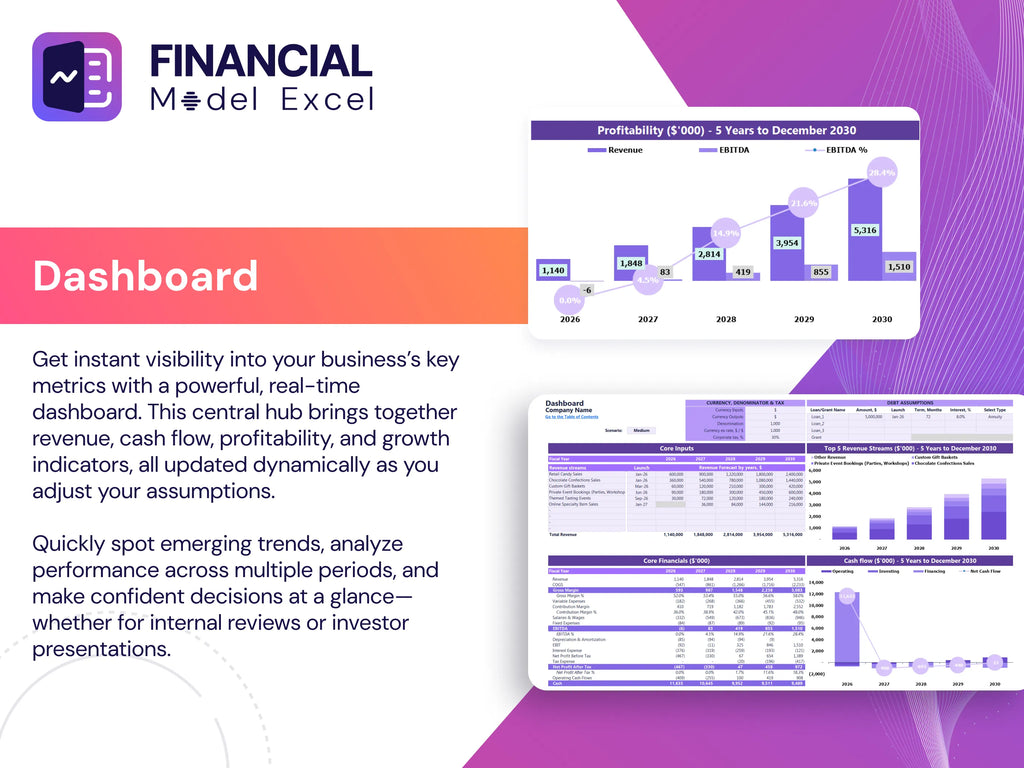
Business Financial Statements
In sustainable textile financial modeling, three core financial statements drive strategic insight. The Income Statement details revenues, expenses, depreciation, and taxes, revealing profitability. The Balance Sheet presents assets, liabilities, and shareholder equity, ensuring financial stability. The Cash Flow Statement tracks cash inflows and outflows, highlighting liquidity and operational success. Integrating these into apparel recycling cost models or textile recycling investment models supports robust financial planning for textile sustainability and informed decision-making within the circular economy textile financials.
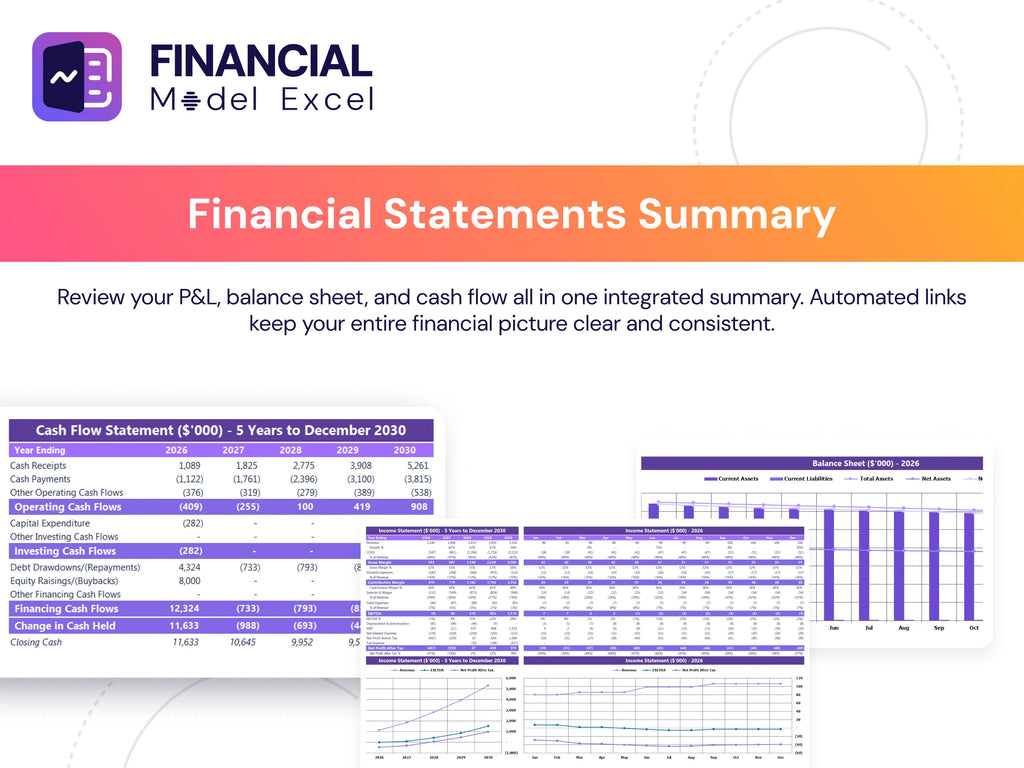
Sources And Uses Statement
This comprehensive financial modeling template offers in-depth analysis of textile recycling revenue streams and cost distribution, enabling precise financial planning for textile sustainability. By breaking down cash flow sources and tracking their allocation, it supports strategic business planning and enhances financial transparency. Ideal for fabric waste financial projections and apparel recycling cost models, this five-year forecast tool streamlines reporting and delivers reliable, data-driven insights—empowering stakeholders to optimize profitability and assess the economic impact of textile recycling with confidence.
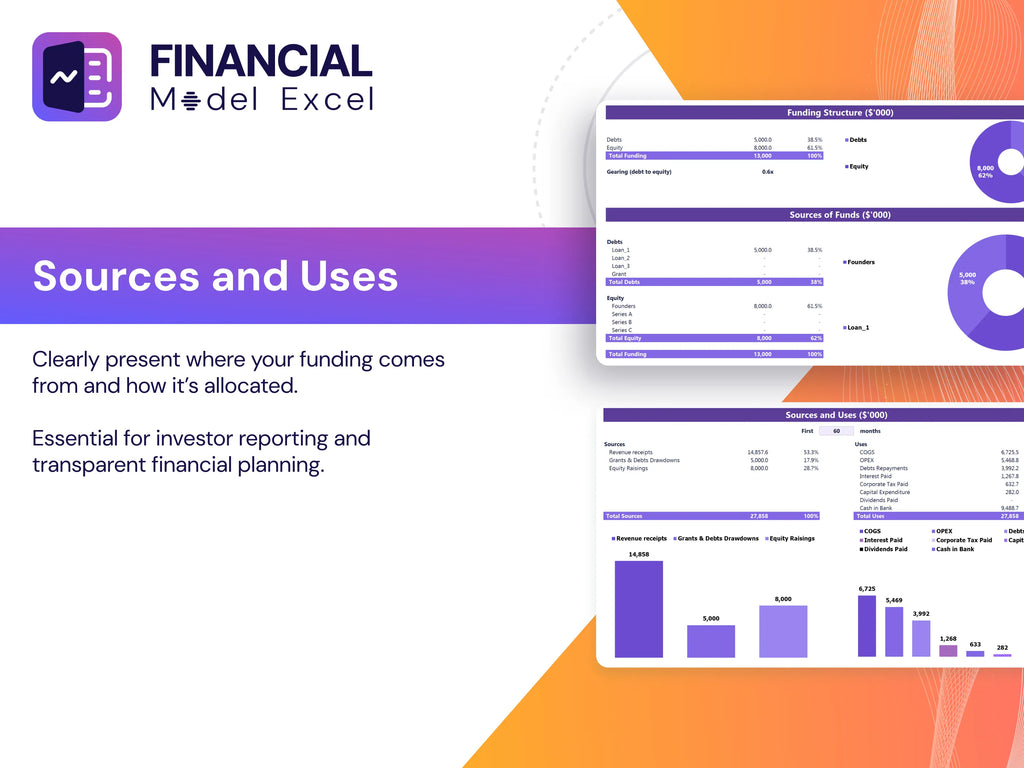
Break Even Point In Sales Dollars
The break-even analysis graph, integrated into this comprehensive 3-statement financial model, is crucial for assessing the economic impact of textile recycling ventures. This key metric reveals the revenue threshold needed to cover all operational costs, including taxes, ensuring informed financial planning for textile sustainability. Once this point is achieved, profitability begins, signaling that investments in sustainable textile projects or apparel recycling cost models are generating returns. Incorporating this analysis supports robust financial forecasting and strategic decision-making within the circular economy textile financials framework.
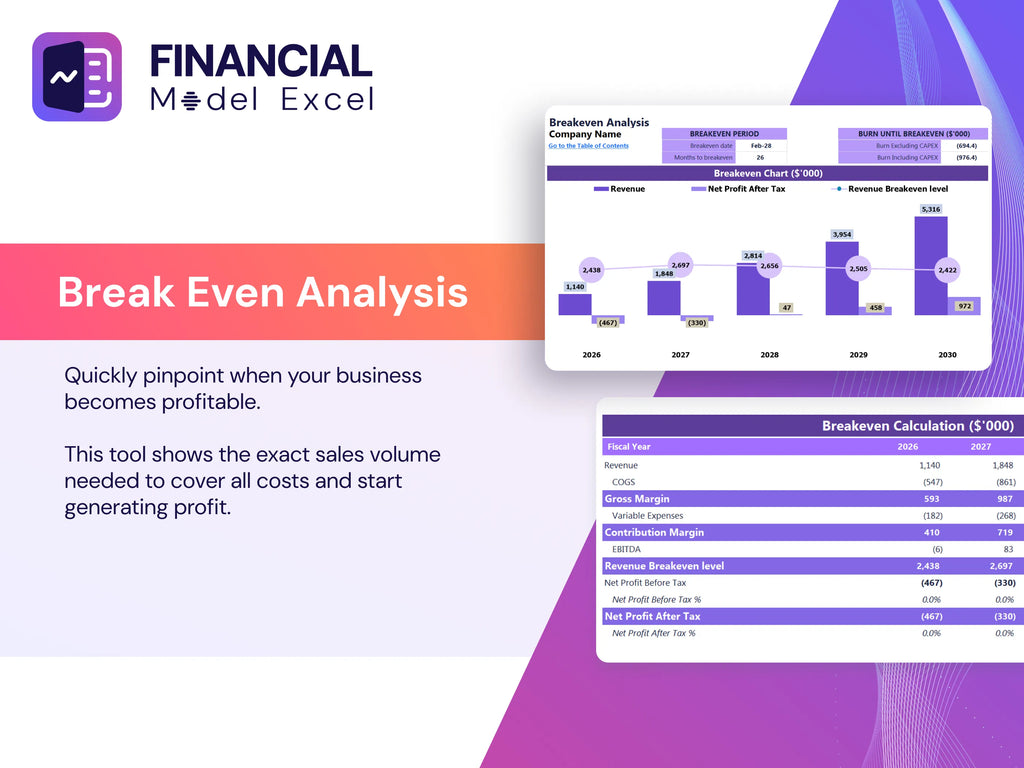
Top Revenue
Revenue stands as the cornerstone in designing any financial model for sustainable textile ventures. It drives all other metrics within apparel recycling cost models and textile recycling financial analysis. Accurate revenue management is crucial when developing fabric waste financial projections or circular economy textile financials. Leveraging historical data forms the foundation for growth rate assumptions in revenue forecasting. Our financial modeling template offers a versatile revenue tab, enabling analysts to evaluate multiple scenarios, ensuring precise and dynamic financial planning for textile sustainability and recycled fabric market financial analysis.
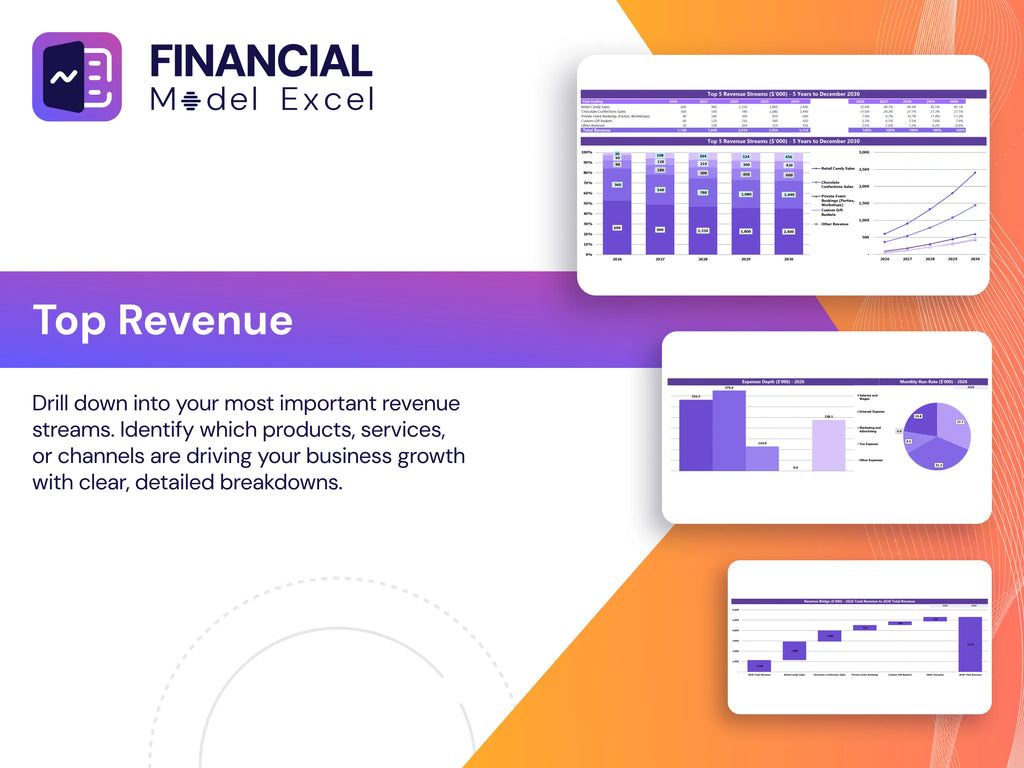
Business Top Expenses Spreadsheet
Accurate revenue forecasting is vital in sustainable textile financial modeling, directly impacting the economic impact of textile recycling and overall enterprise value. Management and analysts must rigorously analyze apparel recycling cost models and fabric waste financial projections to build reliable recycled textile business plan financials. Utilizing detailed assumptions and historical data, this textile recycling investment model drives precise financial planning for textile sustainability. A well-constructed clothing recycling profitability model ensures clear visibility into textile recycling revenue streams, supporting strategic decisions that enhance textile circularity financial metrics and strengthen eco-friendly textile financial forecasts.
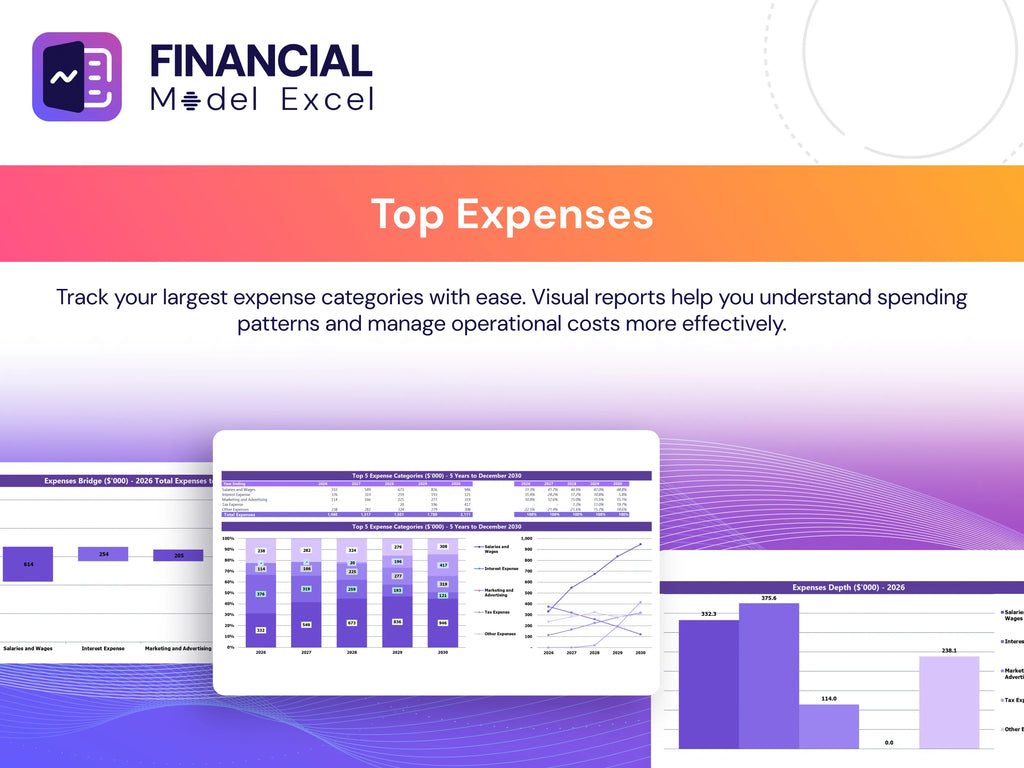
TEXTILE RECYCLING FINANCIAL MODEL FINANCIAL PROJECTION EXPENSES
Costs
Start-up costs are critical in any textile recycling financial analysis, especially within sustainable textile financial modeling. Initial expenses, occurring before operations begin, must be rigorously tracked and reviewed to prevent underfunding and financial setbacks. Utilizing a detailed financial planning model with a dedicated proforma outlining spending and funding ensures accurate apparel recycling cost models and fabric waste financial projections. This proactive approach drives precise expense forecasting and strengthens the recycled textile business plan financials, ultimately enhancing the economic impact of textile recycling and boosting clothing recycling profitability.
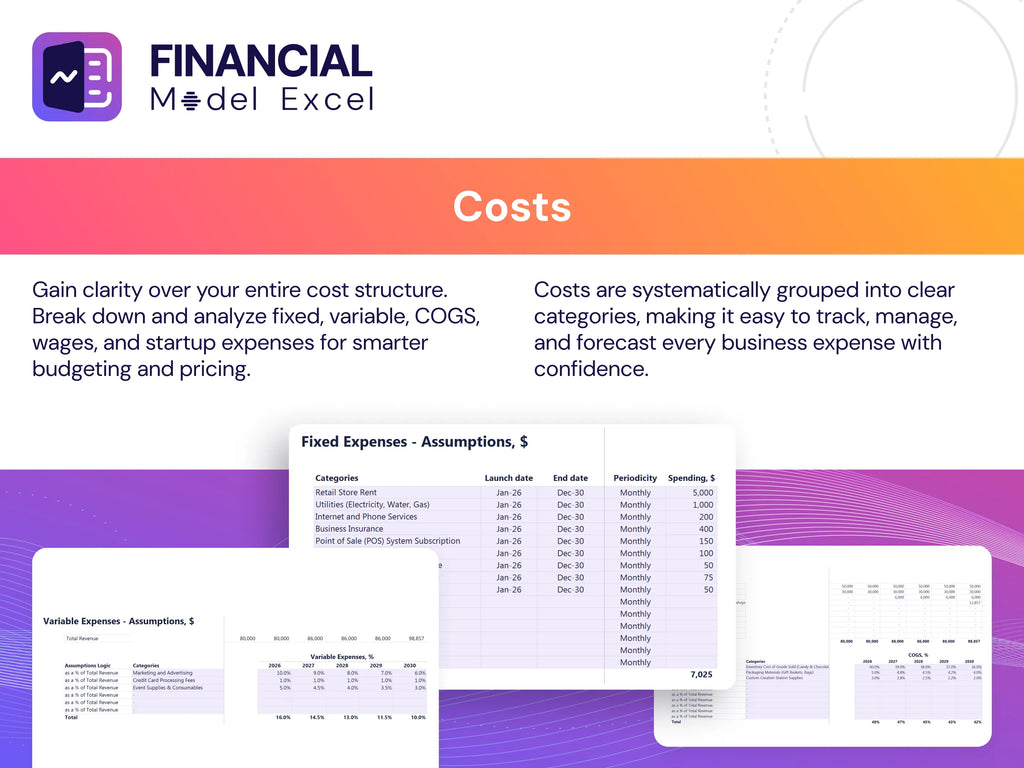
CAPEX Spending
This textile recycling financial model template streamlines financial planning for textile sustainability by automatically calculating required funding based on cash flow, incorporating diverse investment sources. Designed for eco-friendly textile financial forecasts and apparel recycling cost models, it supports comprehensive cost-benefit analysis and economic impact assessments. Ideal for recycled textile business plan financials and circular economy textile financials, this tool enhances accuracy in fabric waste financial projections and clothing recycling profitability models, empowering stakeholders to optimize textile waste management financial strategies with confidence.
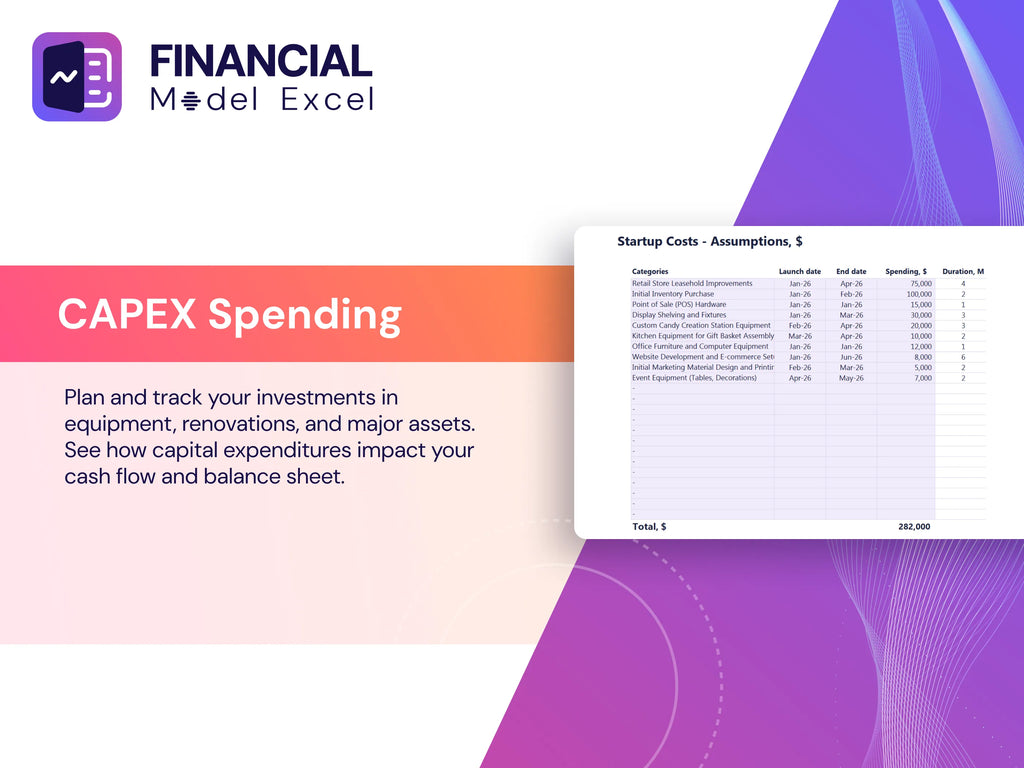
Loan Financing Calculator
Our comprehensive income statement template integrates a detailed loan amortization schedule, enabling precise financial planning for textile sustainability initiatives. It calculates payment amounts by factoring in principal, interest rates, loan duration, and payment frequency—key elements in sustainable textile financial modeling and apparel recycling cost models. This tool supports financial analysis for textile recycling investments, offering clear insights into revenue streams and cost-benefit scenarios. Ideal for businesses aiming to optimize fabric waste financial projections and implement eco-friendly textile financial forecasts with confidence and accuracy.
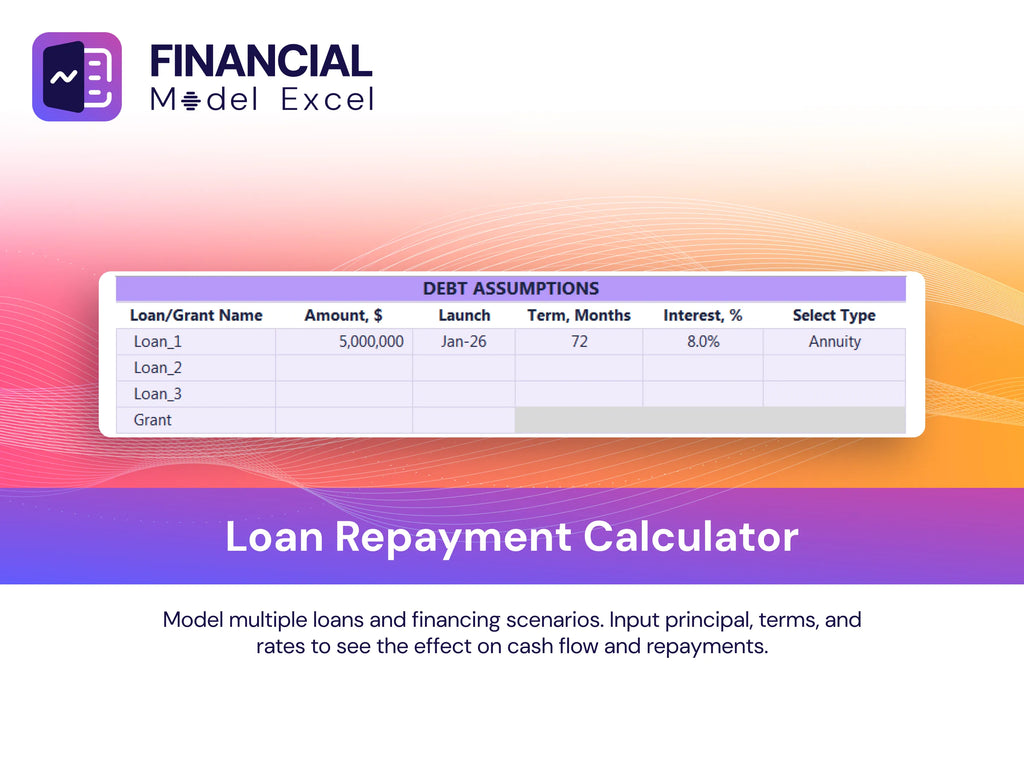
TEXTILE RECYCLING FINANCIAL MODEL EXCEL FINANCIAL MODEL METRICS
Financial KPIs
Net Present Value (NPV) is a key metric in sustainable textile financial modeling. It represents the sum of discounted cash inflows over multiple periods, reflecting that money today holds greater value than the same amount in the future. In apparel recycling cost models and textile recycling investment models, NPV helps evaluate project viability by quantifying the economic impact of textile recycling. Accurate NPV calculations guide financial planning for textile sustainability, enabling stakeholders to forecast profitability, optimize revenue streams, and make informed decisions in eco-friendly textile ventures and circular economy textile financials.
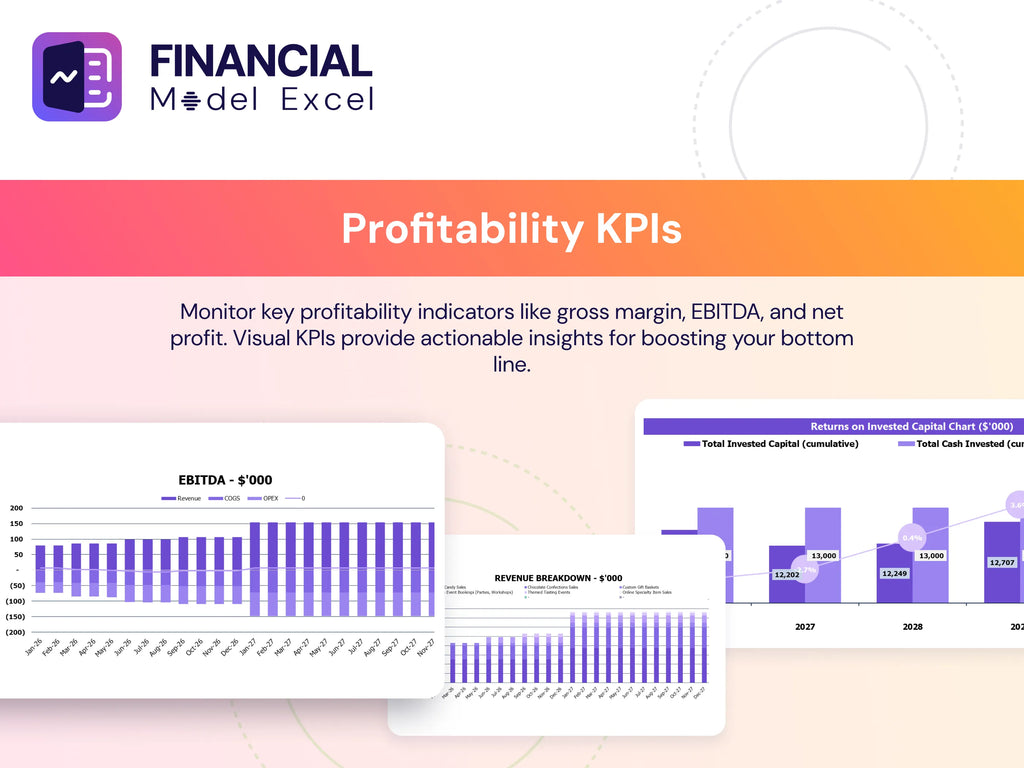
Cash Flow Forecast Excel
Effective financial planning is crucial for startups, especially in sustainable textile ventures. Utilizing textile recycling financial analysis and apparel recycling cost models enables precise cash flow forecasting and revenue stream assessment. An Excel-based cash flow statement clearly tracks payments and receipts, supporting innovative financial modeling for waste textile management. This tool enhances capital turnover and profitability projections, vital for eco-friendly textile business plans. Whether launching or scaling, leveraging these financial strategies ensures strong economic impact and sustainability in textile circularity, empowering businesses to optimize operations and drive growth.
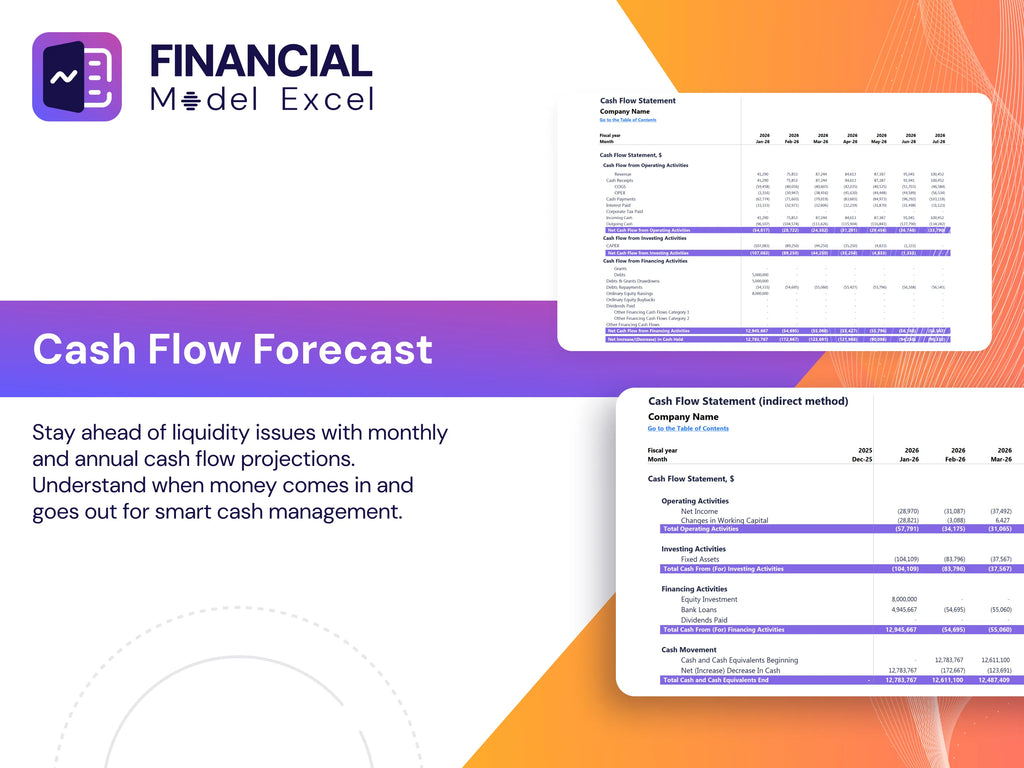
KPI Benchmarks
The financial forecasting model benchmark tab analyzes key operational and financial KPIs, integrating industry averages for a comprehensive textile recycling financial analysis. This comparison highlights relative performance, offering critical insights for sustainable textile financial modeling. For start-ups, these benchmarks are invaluable, guiding apparel recycling cost models and fabric waste financial projections toward industry best practices. By leveraging such financial planning for textile sustainability, companies can optimize their textile recycling revenue streams and enhance the economic impact of textile recycling. Ultimately, benchmarking serves as a pivotal tool in refining eco-friendly textile financial forecasts and strengthening circular economy textile financials.
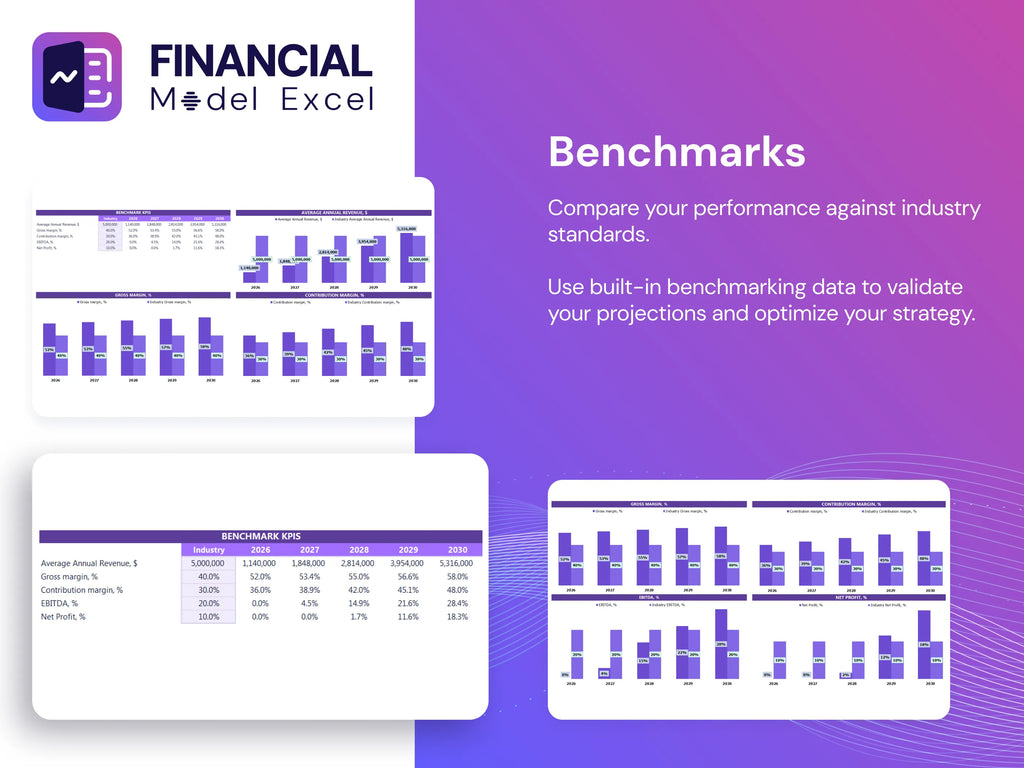
P&L Statement Excel
The Profit and Loss Statement, or forecasted Income Statement, is a critical tool for evaluating your textile recycling financial model. It provides investors with clear insights into projected revenues, expenses, and overall profitability. Utilizing pro forma profit and loss templates, you can effectively forecast your sustainable textile financial performance, validate your apparel recycling cost model, and support financial planning for textile sustainability. This statement is essential for demonstrating the economic impact of textile recycling and guiding strategic decision-making within your recycled textile business plan financials.
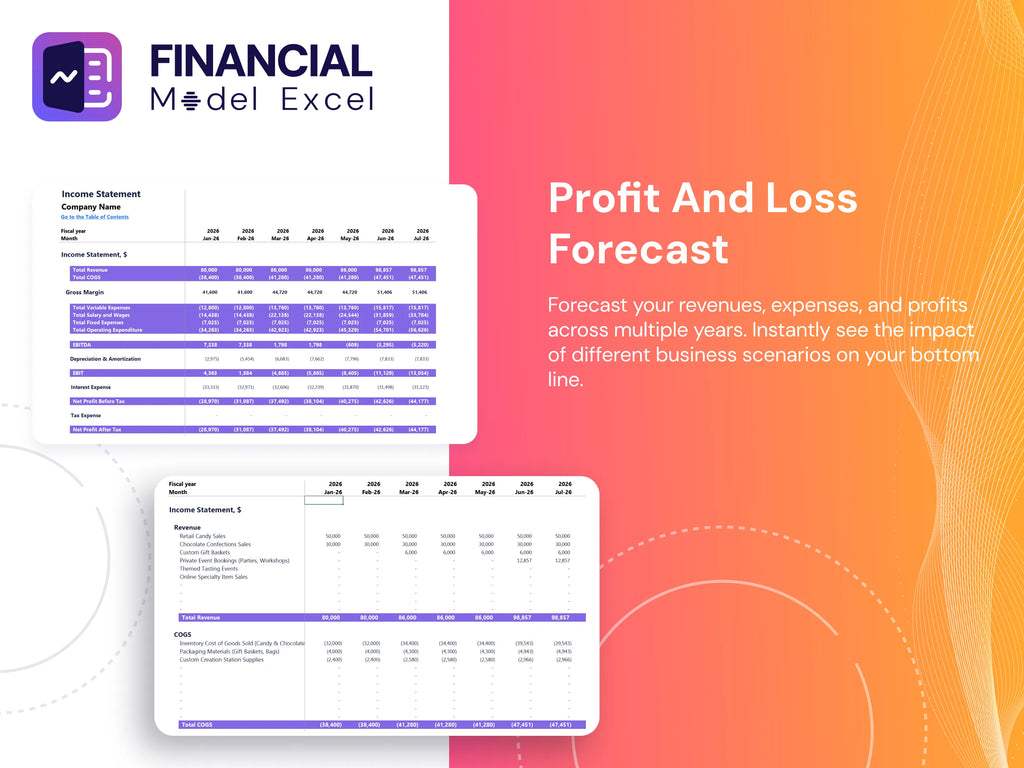
Pro Forma Balance Sheet Template Excel
The integrated three-way financial model seamlessly connects monthly and annual balance sheet forecasts with cash flow projections, P&L templates, and key inputs. This comprehensive approach offers a detailed pro forma overview of your assets, liabilities, and equity accounts, essential for robust financial planning in sustainable textile ventures. Ideal for textile recycling financial analysis and eco-friendly textile financial forecasts, it empowers strategic decision-making by highlighting critical textile waste management financial metrics and revenue streams within a circular economy framework.
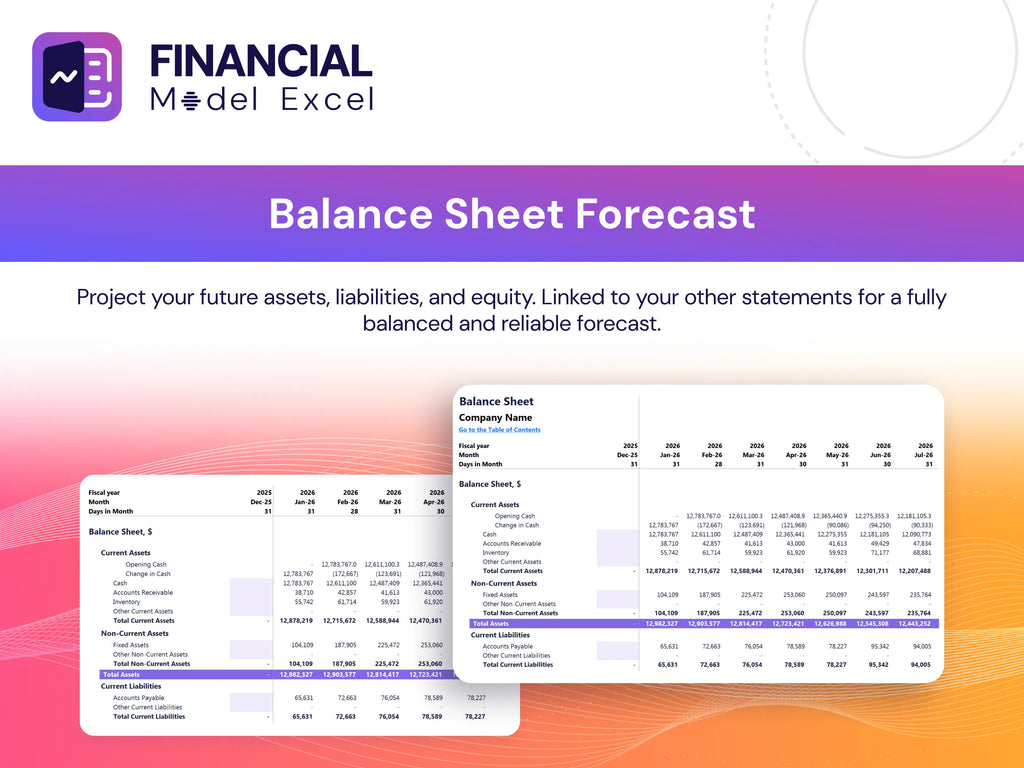
TEXTILE RECYCLING FINANCIAL MODEL FINANCIAL PROJECTION TEMPLATE VALUATION
Startup Valuation Model
Our pre-revenue startup valuation template integrates key financial metrics, including Weighted Average Cost of Capital (WACC), Discounted Cash Flows (DCF), and Free Cash Flows (FCF), tailored for sustainable textile ventures. WACC critically analyzes capital structure, weighting equity and debt to assess investment risk—essential for textile recycling investment models and financial feasibility studies. DCF offers precise projections of future cash flows, supporting eco-friendly textile financial forecasts and economic impact analyses. This robust framework empowers financial planning for textile sustainability, enabling accurate cost-benefit analysis and driving informed decisions in apparel recycling cost models and circular economy textile financials.
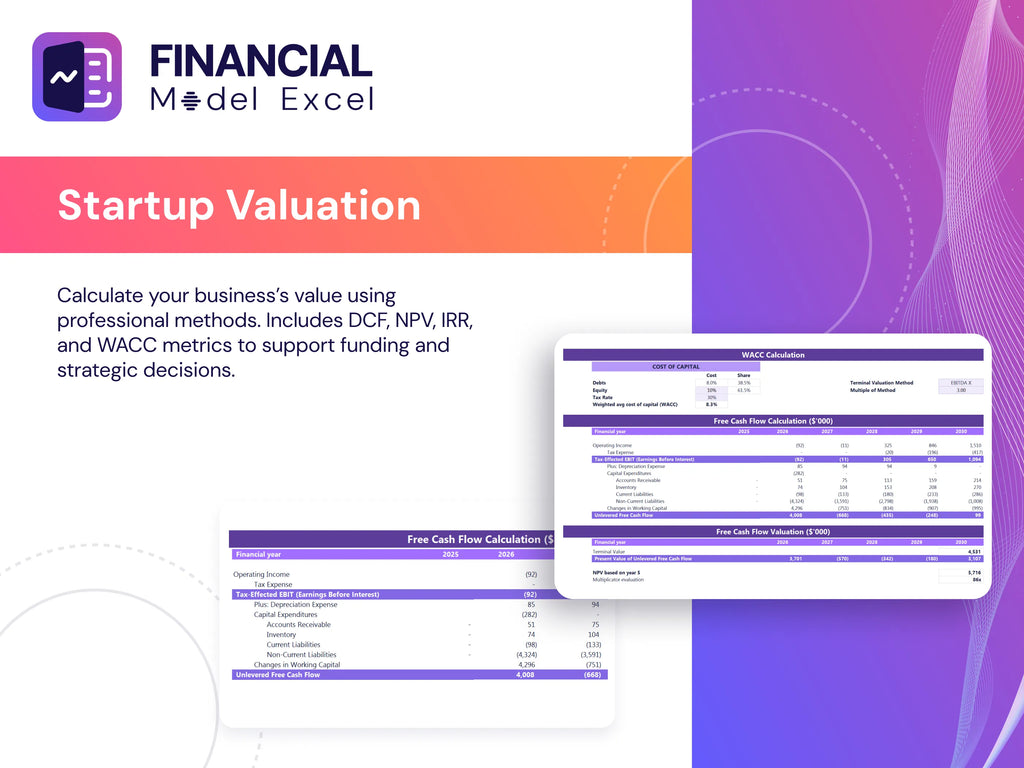
Cap Table
The cap table outlines the company’s share capital, crucial for informed financial planning and market value analysis. Utilizing this startup cap table, investors can accurately assess the textile recycling investment model’s valuation. Our comprehensive financial model for textile recycling startups includes detailed proformas and financial metrics, supporting robust financial analysis and eco-friendly textile financial forecasts. Designed for clarity and precision, it empowers strategic decisions around sustainable textile financial modeling, cost-benefit analysis, and circular economy textile financials. Secure access now to elevate your financial planning for textile sustainability with a professional, all-encompassing investment tool.
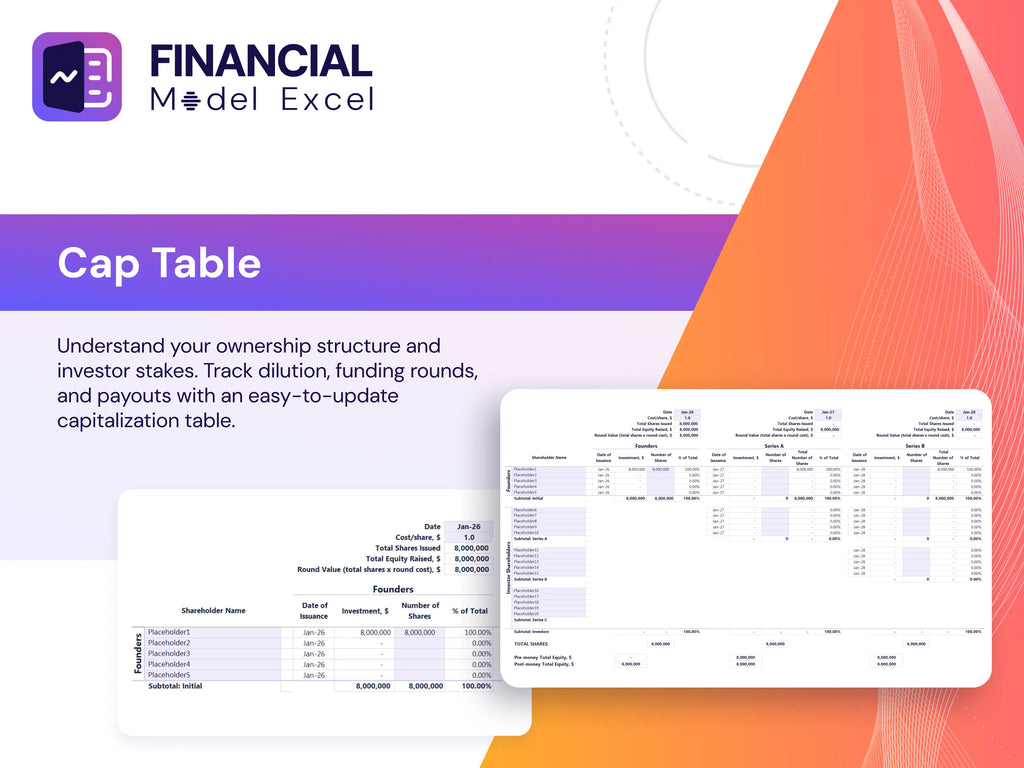
TEXTILE RECYCLING EXCEL FINANCIAL MODEL TEMPLATE ADVANTAGES
The textile recycling financial model empowers precise budgeting, boosting profitability and driving sustainable industry growth confidently.
Our textile recycling financial model precisely identifies break-even points and maximizes ROI for sustainable profitability.
The textile recycling financial model ensures clarity, reducing misunderstandings and enhancing sustainable business decision-making.
Our textile recycling financial model empowers startups to secure funding with clear, data-driven sustainability and profitability insights.
Our apparel recycling cost model ensures precise cash flow management to confidently pay suppliers and employees on time.
TEXTILE RECYCLING FINANCIAL PROJECTION MODEL EXCEL ADVANTAGES
Our apparel recycling cost model ensures reliable loan repayment through precise financial forecasting and profitability analysis.
Leverage sustainable textile financial modeling to showcase clear loan repayment plans, boosting lender confidence and approval likelihood.
Unlock profits and sustainability with our simple, practical textile recycling financial model tailored for maximum economic impact.
Unlock confident growth with our simple yet sophisticated 5-year textile recycling financial model—reliable results, minimal expertise needed.
Our apparel recycling cost model identifies cash gaps and surpluses before they happen, ensuring proactive financial control.
Textile recycling financial modeling enables proactive cash flow management, preventing deficits and maximizing reinvestment opportunities.
Optimize spending and maximize returns with our precise apparel recycling cost model for sustainable textile financial success.
Our apparel recycling cost model empowers accurate forecasting of cash flows, enhancing strategic financial planning and sustainable growth.
The apparel recycling cost model delivers precise key metrics analysis, optimizing profitability and sustainability in textile waste management.
Unlock sustainable growth with our 5-year textile recycling financial model delivering precise projections and GAAP/IFRS compliance.





